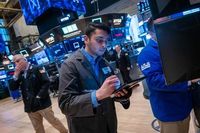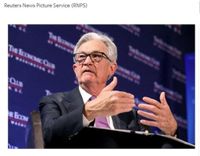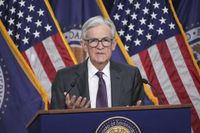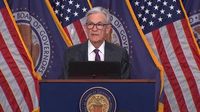The U.S. Federal Reserve (Fed) has decided to freeze the benchmark interest rate at 4.25-4.50% as it navigates a complex economic landscape marred by growing uncertainties and inflation pressures. The decision was made on March 19, 2025, during the Federal Open Market Committee (FOMC) meeting, where Chairman Jerome Powell cited significant uncertainties due to changes in trade policies and overall economic outlook.
Despite the inflation rate stabilizing at around 2.7%—up from a previous forecast of 2.5%—the Fed opted to maintain the current rate, leading to speculation about the future direction of monetary policy. Powell reassured markets that there is no immediate need to adjust policies as the economy appears positioned for clearer indicators ahead.
For the second consecutive time, the Fed has held rates steady since it first initiated a series of cuts in September 2024, a decision that some analysts interpreted as an attempt to balance the risks of inflation and economic growth against a backdrop of potential market volatility.
On March 20, 2025, market reactions reflected this cautious stance; major stock indices, including the Dow Jones Industrial Average and the S&P 500, ended the day with gains of 0.92% and 1.08% respectively, buoyed by investor optimism over the Fed’s indication of possible future rate cuts this year.
Fed officials noted that they forecast a year-end benchmark interest rate of approximately 3.9%, anticipating two 0.25-point cuts throughout the year. This represents a slight reduction in their previous outlook that hinted at a more aggressive rate-cutting approach.
Amid these developments, concerns have emerged about stagflation—a situation where inflation rises concurrently with stagnant economic growth—especially given the pressures exerted by the tariffs implemented under the Trump administration. The Fed’s latest adjustments indicate a belief that economic growth forecasts have been dimmed, previously predicted at 2.1% but now lowered to 1.7%.
Moreover, the Fed revised its year-end unemployment rate forecast upward from 4.3% to 4.4%, reflecting a cautious view of the labor market amid these shifts. Powell's comments following the FOMC meeting emphasized that continued monitoring of inflation trends and labor conditions is vital to ensuring balanced economic performance.
In terms of broader market implications, the interest rate freeze maintained the gap with South Korea's benchmark rate at 1.75 percentage points, a consideration for international investment dynamics.
Powell's balancing act was particularly evident as he addressed the uncertainties posed by tariffs, which directly contributed to inflationary pressures while economic growth appears to waver. “Some portions are clearly driven by tariffs,” Powell explained, suggesting that adjustments in trade policy will need to be closely monitored to decipher their real economic impact.
The sentiment in the markets reflected these dynamics—weighing concerns against optimistic forecasts of potential rate cuts later in the year. Major technology stocks, buoyed by optimism surrounding Fed actions and future interest easing, saw significant rebounds. For instance, shares of tech giants rose after news that the Fed would not rush into further rate adjustments and that conditions may allow for a careful reevaluation of monetary policy in due time.
The outlook for the consumers and businesses remains mixed. While there is cautious optimism regarding inflation's impending moderation post-tariffs, the dual pressures of rising prices and economic growth slower than initially forecasted kept many analysts wary of possible impacts on consumer sentiment and spending—a critical engine of economic activity.
As the markets digest the Fed’s recent resolutions and consider the economic landscape shaped by varied forces, continued focus will rest on upcoming inflation metrics and employment reports. With Powell emphasizing caution yet openness to future policy shifts, stakeholders will be watching closely for signs that may alter the current trajectory.
The overarching narrative emerging from the latest FOMC statement and Chairman Powell's remarks underscores a monetary policy landscape characterized by cautious optimism amid significant economic challenges—acknowledging risks while being prepared to take necessary actions when clarity better emerges.
As this economic backdrop unfolds, stakeholders will require patience while responding to live changes in inflation rates and employment trends to better navigate future financial landscapes. Considering ongoing uncertainties, Powell remarked, “We are in a good position to take a closer look at the economic and inflation trends—all the while maintaining flexibility in our approach.”
Ultimately, the coming months will further clarify these dynamics, potentially charting a course of sustained economic performance against the backdrop of global market shifts shaped by complex forces, elevated expectations, and historical contexts redefining consumer and business strategies throughout 2025 and beyond.








